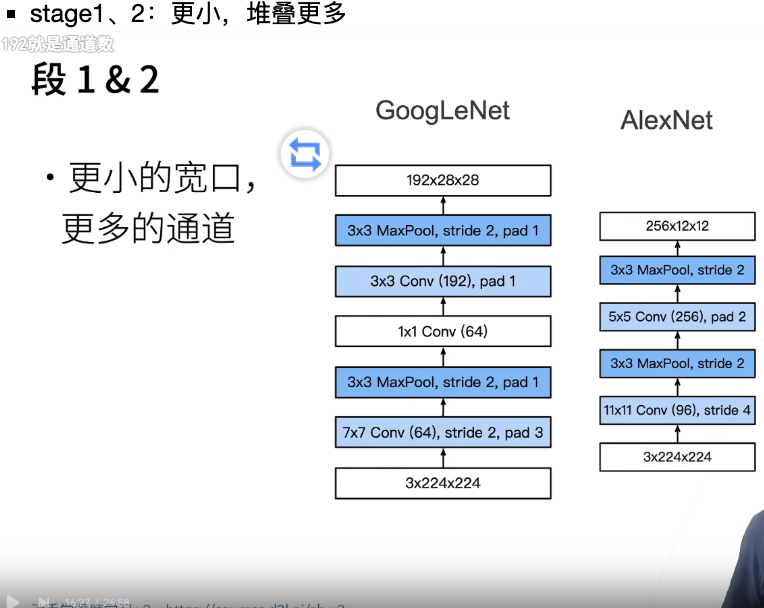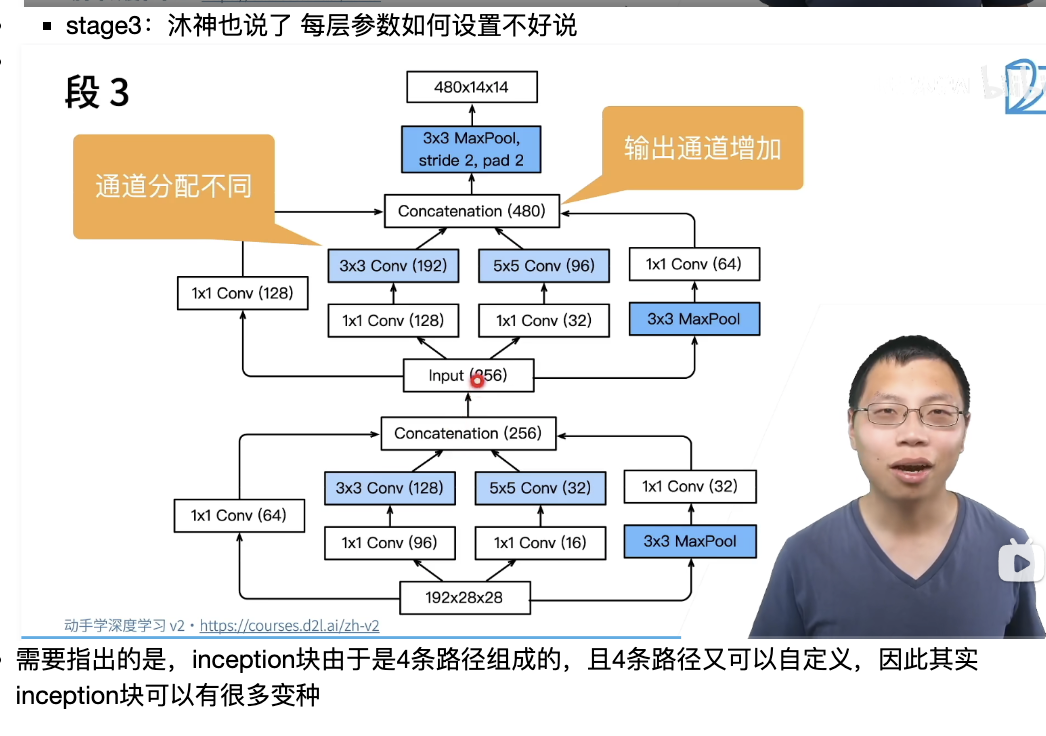1
2
3
4
5
6
7
8
9
10
11
12
13
14
15
16
17
18
19
20
21
22
23
24
25
26
27
28
29
30
31
32
33
34
35
36
37
38
39
40
41
42
43
44
45
46
47
48
49
50
51
52
53
54
55
56
57
58
59
|
# 接下来我们自己动手实现这个网络
# 第⼀个模块使⽤64个通道,7X7卷积层
b1 = nn.Sequential(
nn.Conv2d(1,64,kernel_size=7,padding=3,stride=2),
nn.ReLU(),
nn.MaxPool2d(kernel_size=3,padding=1,stride=2)
)
b2 = nn.Sequential(
nn.Conv2d(64,64,kernel_size=1),
nn.ReLU(),
nn.Conv2d(64,192,kernel_size=3,padding=1),
nn.MaxPool2d(kernel_size=3,padding=1,stride=2)
)
# stage3开始就要使用inception块了
b3 = nn.Sequential(
# 输入192 输出 64 + 128 + 32 + 32 = 256
Inception(in_channels= 192,c1 = 64,c2=(96,128),c3=(16,32),c4=32),
# 输出为 128 + 192+ 96+ 64 = 480
Inception(256, 128, (128, 192), (32, 96), 64),
nn.MaxPool2d(kernel_size=3,padding=1,stride=2)
)
# stage4 stage3能写出来,4就照样做就可以了
b4 = nn.Sequential(
Inception(480, 192, (96, 208), (16, 48), 64),
Inception(512, 160, (112, 224), (24, 64), 64),
Inception(512, 128, (128, 256), (24, 64), 64),
Inception(512, 112, (144, 288), (32, 64), 64),
Inception(528, 256, (160, 320), (32, 128), 128),
nn.MaxPool2d(kernel_size=3, stride=2, padding=1)
)
# stage5是输出层
b5 = nn.Sequential(
Inception(832, 256, (160, 320), (32, 128), 128),
Inception(832, 384, (192, 384), (48, 128), 128),
# 自适应平均池化层, 能够自动选择步幅和填充,比较方便
nn.AdaptiveAvgPool2d((1,1)),
nn.Flatten()
)
# 这里b1-b5都是nn.Sequential,但是好像可以直接嵌套进新的nn.Sequential
net = nn.Sequential(b1, b2, b3, b4, b5, nn.Linear(1024, 10))
# 这里输入不是224X224,改为96X96,加快训练速度
X = torch.rand(size=(1, 1, 96, 96))
for layer in net:
X = layer(X)
print(layer.__class__.__name__,'output shape:\t', X.shape)
lr, num_epochs, batch_size = 0.1, 10, 128
train_iter, test_iter = d2l.load_data_fashion_mnist(batch_size, resize=96)
d2l.train_ch6(net, train_iter, test_iter, num_epochs, lr, d2l.try_gpu())
|
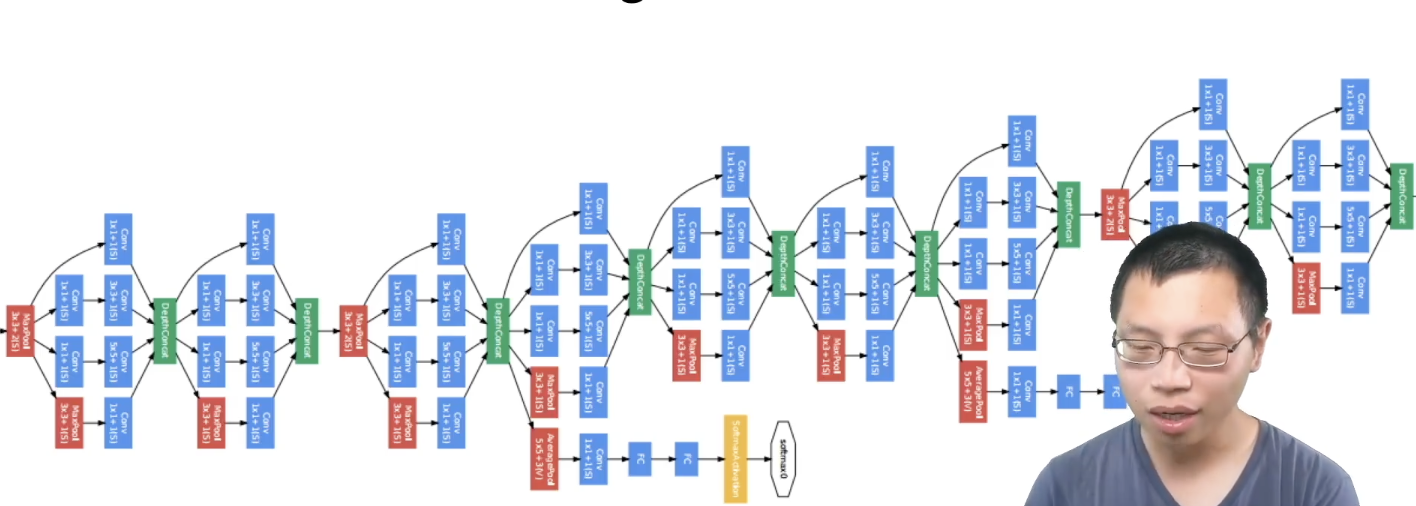
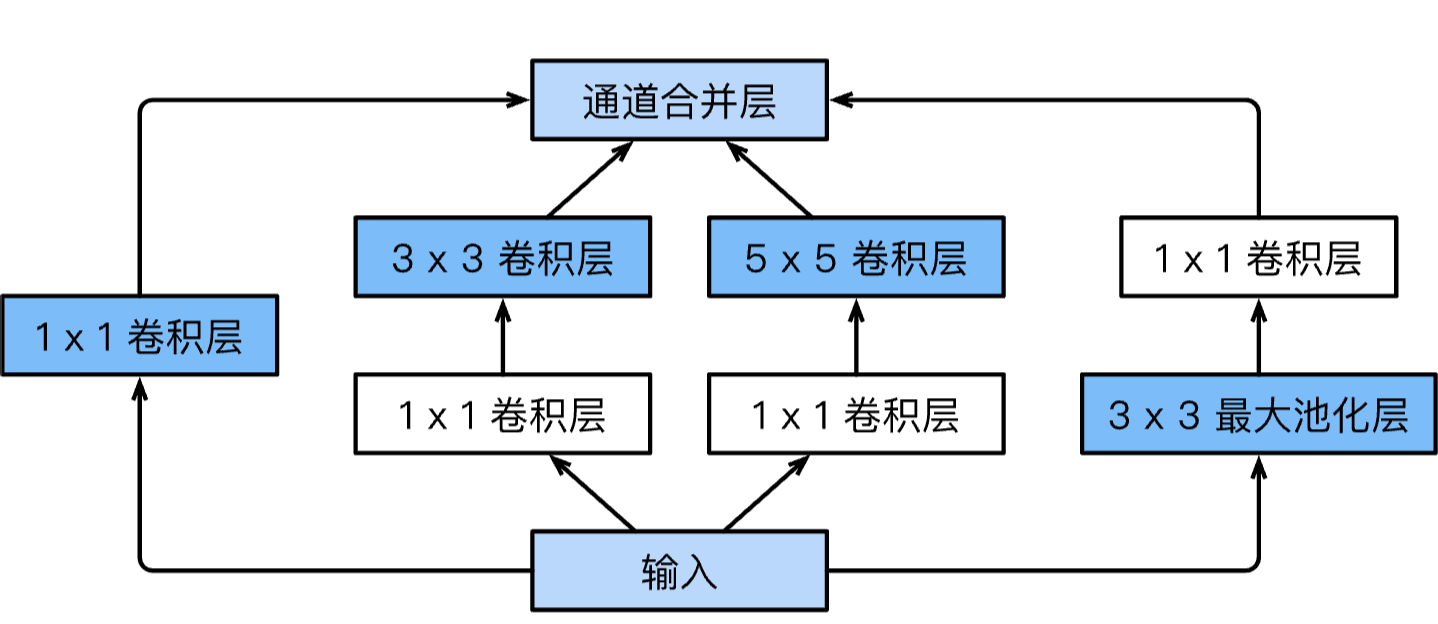
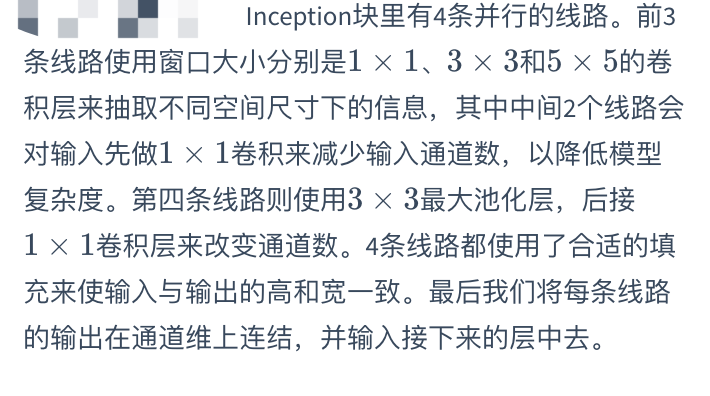
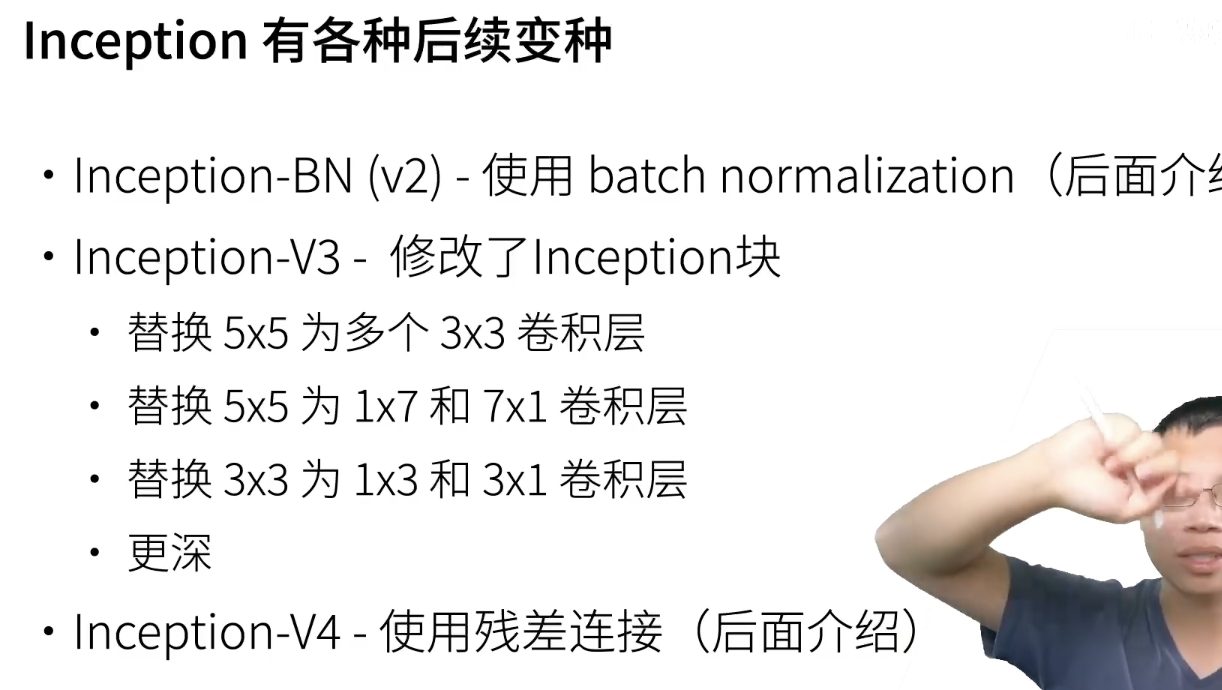
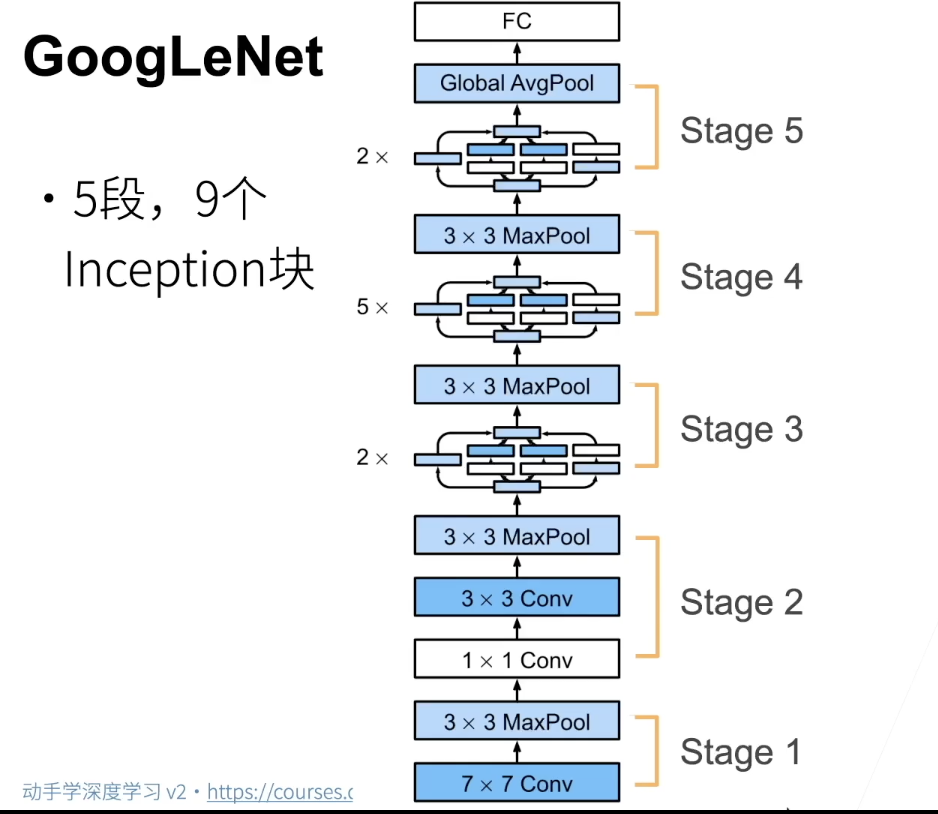
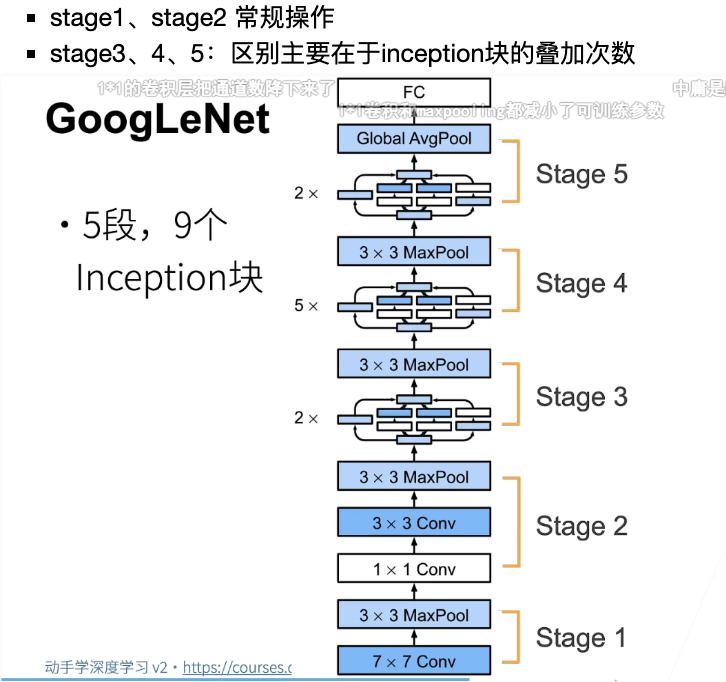 下面是详细讨论每个stage:
下面是详细讨论每个stage:
